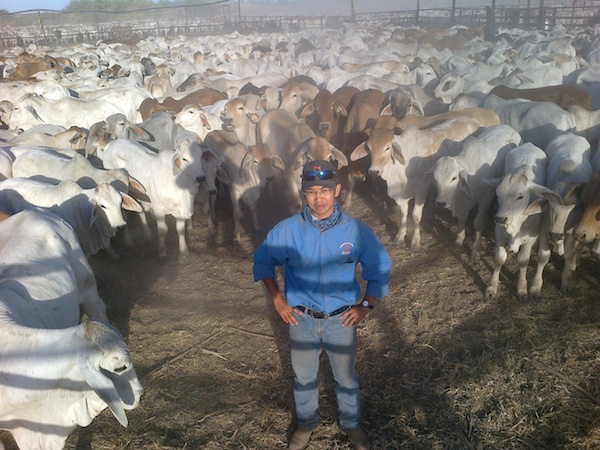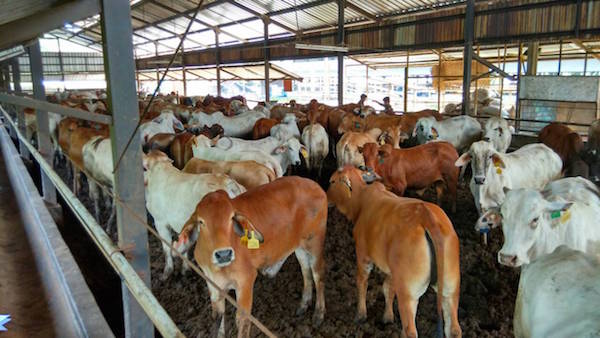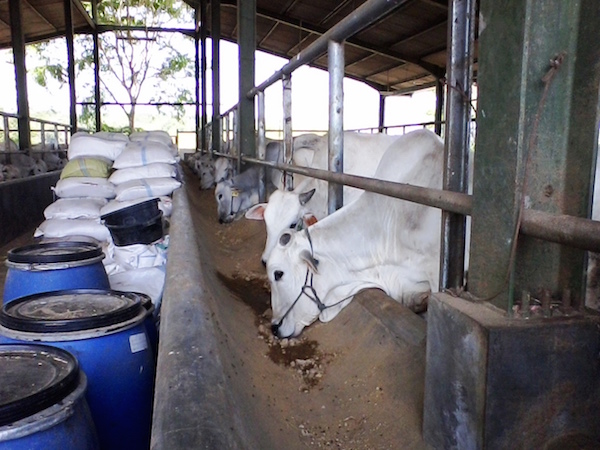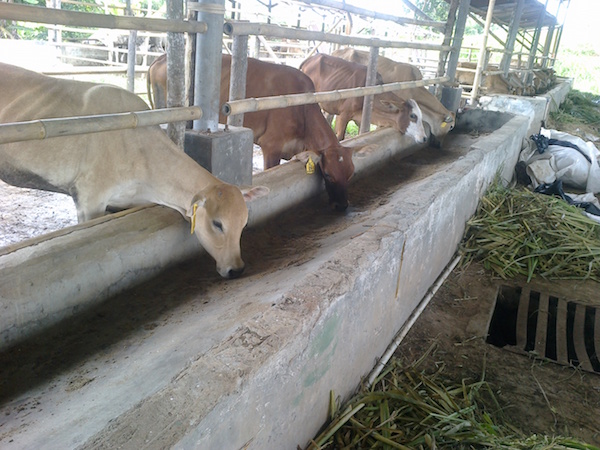5 Questions with Ihsan
Written by Ihsan – Student, 2014 Indonesia Australia Pastoral Industry Program.
Editor’s Note: Ihsan is an Indonesian Student who visited Australia as a part of the 2014 Indonesia Australia Pastoral Industry Program. We asked him five questions about his experiences in the Indonesian and Australian cattle industry. The following is not a representation of the thoughts or views of Central Station.
What experience do you have working with cattle?
I used to work cattle stations owned by Heytesbury Cattle Company at Birrindudu and Victoria River Downs in Australia. Now I’m working at a student farm at uni named Cattle And Buffalo Club farm who run local cattle and also Australian cattle such as Brahman cross.
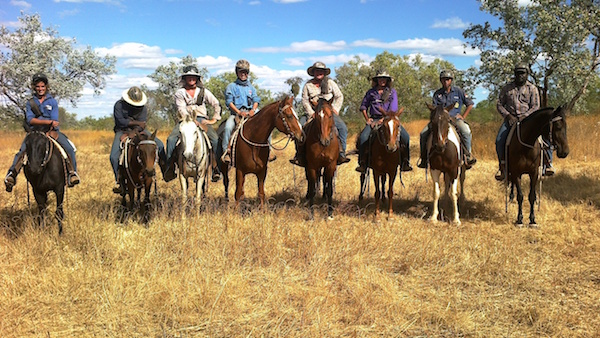 Working with Australian Stockmen.
Working with Australian Stockmen.
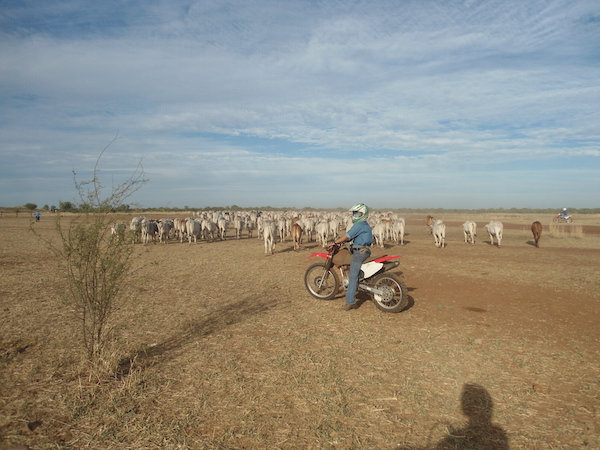 Walking Cattle at Birrindudu station NT.
Walking Cattle at Birrindudu station NT.
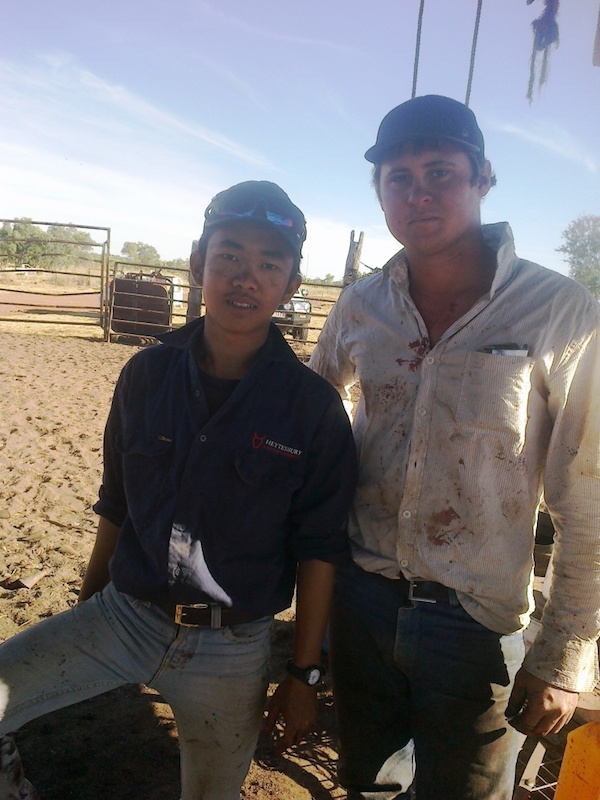 After working hard at VRD station.
After working hard at VRD station.
How important do you think it is that Australian cattle continue to come to Indonesia?
Remembering there’s a lot of people in Indonesia, more than in Australia, makes a rapidly growing demand of meat. Sadly Indonesia doesn’t have a lot of cattle to breed, and besides the land is limited for farming, where Australia has a landscape which is ideal for breeding tropically adapted cattle suited to South-East Asian conditions, but a poor place to fatten them. Conversely, Indonesia has limited land availability for breeding, but has food sources and expertise for feedlots and fattening. It’s very important to have a synergy between Indonesia and Australia in the beef cattle industry.
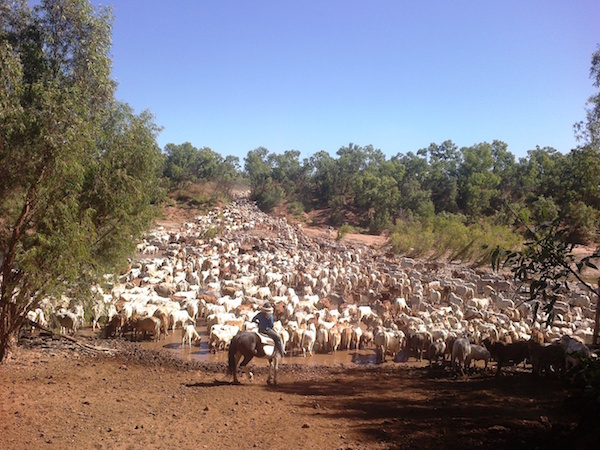 Walking cattle at VRD station.
Walking cattle at VRD station.
What is it like being an animal science student in Indonesia?
Being an animal science students for me is something unique and new, I mean, this is not what I really wanted to be when I was a kid, besides I do not have a farm in the family. I was feeling less than confident to be an animal science student in college and regretting my decision to turn down the opportunity to study an “International Relationships” major. I’ve studied before only because of the influence of the environment and the community in a college at that time. But now after seeing the opportunities and the potential that exists I felt ready to select animal science and became more open minded.
You know, not many people want to become a farmer (all the people in Indonesia know that). The world of farming is always synonymous with faeces, cattle, mud, filth, and something that they say is “not cool” (that’s how they figure when you becoming an animal science student). In addition, animal science major belongs to the lowest grade of all majors at the University of almost all of Indonesia.
But here I am, talking about feeding this country, Indonesia. You know, not many people know where their meat comes from and not many people care. Imagine the news saying that 80% farmers today are in their 60’s. Where is the young generation? What have they become? Who’s gonna supply the food next after the old have gone? Since then I realized that it’s my chance to regenerate farm industry, and it’s my responsibility to be part of the animal science students to develop a great livestock industry in future by becoming an entrepreneur who is armed with science and knowledge to develop farm industry, especially in beef cattle industry.
So today, for me being an animal science student, I feel so proud and I enjoy every subject that lecturers give me. I feel so much passion for agriculture. Also last year I got lucky to have a chance to visited Northern Territory Australia and work for a few weeks in cattle station which is totally changes my point of view about beef cattle industry. I saw thousands of cattle, big trucks, a chopper, mustering process, a horse, a cowboy – now what we called a stockman, and saw a lot the differences between Indonesian livestock and Australian such as: the way they work, their work spirit, the ambition in developing great livestock, and how they care about the animal welfare which makes me think that working in farming is not something to be ashamed of because it’s dirty but it’s more cooler than any other job. It takes a lot of courage and it’s fun!
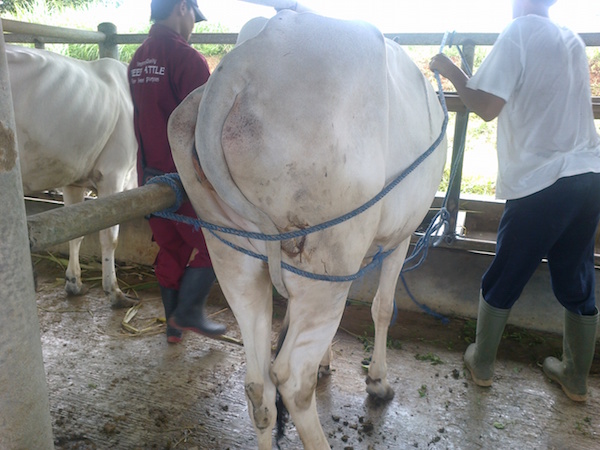 Preparing for artificial insemination.
Preparing for artificial insemination.
 Artificial Insemination training at breeding center owned by government.
Artificial Insemination training at breeding center owned by government.
What is your point of view about animal welfare, especially in Indonesia?
Animal welfare is a concept first developed in Western countries and there has been numerous researches and studies conducted on its implementation for years. Sadly, though, in developing countries like Indonesia, there were so few studies on animal welfare, resulting in various and differing views among locals on how animals should be treated due to the lack of standardization or protocol, especially regarding the concept of animal welfare.
Theoretically, there are five major points of animal welfare that I know: (1) freedom from hunger and thirst, (2) freedom from discomfort, (3) freedom from pain, injury and disease, (4) freedom to behave normally, and (5) freedom from fear and distress.
In Indonesia, the concept of animal welfare is considered new and it has not been widely spread nor understood. Translating the word ‘welfare’ to Indonesian is also a problem by itself. The closest Indonesian translation for ‘welfare’ is ‘kesejahteraan’. However, ‘kesejahteraan’ holds a quite different meaning among the locals. The word ‘kesejahteraan’ is more closely linked to the well being of human and rarely being used to describe the condition of other creatures.
Furthermore, compared to Western countries, there are a few other aspects that influence how animals are being seen as and treated in Indonesia; namely, religion, culture, politics, and economy.
Looking back to the past, cruelty to animals has been around in Indonesia some forms. Culture is one of the main reasons the animals are being treated poorly. For example, “sabung ayam” (roosters were put in a ring on the ground to fight each other), “adu domba” (sheep fights), and “karapan sapi” (bull racing festival in Madura, Indonesia). Though to be fair, the same things also happen all over the world.
Animal welfare often cause confusion and controversy in Indonesia. Often people question, “How should we know if the animals suffer?” or “How should we know if animals have feelings like human?”.
Admittedly, it is hard to measure or to judge whether an animal is suffering. However, a conclusion can be deducted from an observation of the animal physical condition as well as it’s behavior. Personal experience and observing skills may help in providing objective evidence. Then again, caretakers should be able to differentiate the normal and abnormal behaviors of the animals they are handling based on day-to-day observations.
Seeing the significance of religion in the lives of Indonesian, it is necessary to understand animal welfare from a religious point of view, as a counter-measurement of the current understanding of locals on the subject. The reason is because religion teaches how people should treat not only each other well, but also His other creations including animals and plants. With an approach from a religious point of view, it is possible that a better treatment of animals can be encouraged.
Most Indonesians take their religion seriously. Although the teaching of giving proper treatment towards animals exist in every religion, most religious leaders failed or neglect to punctuate the importance of treating animals properly due to various other things considered more urgent during sermons. In my opinion, if we could link the concept of animal welfare with religious value, more people in Indonesia would comply; partly due to the hope of being rewarded for following God’s order, partly due to fear of falling to hell for mistreating animals.
Eventually, though, the general concept of animal welfare itself is to encourage people to give proper and humane treatment towards animals, including giving enough food, water, and also protection as much as needed by the animals. Basically, this practice is also encouraged as humans were assigned by the Creator to take care of his other creations, including animals. If people could understand the complex feelings of self and others, then by nature, people should also be able to understand and fulfill the simple needs of animals. Animals that, consequently, provide assistance and convenience for humans.
However, the reality is, although people have enough awareness on basic principles of animal welfare, although people generally agree that it is not acceptable to mistreat animals, although some people do express their empathies towards animals, most people do not apply animal welfare in their own practice with animals, nor do they have enough knowledge to know how to apply animal welfare as a concept. In conclusion then, it is of utmost importance for education and community development to encourage the awareness of animal welfare amongst locals and people handling animals either in their daily activities or working environment.
Can you tell us a little about the Indonesian cattle industry?
The beef cattle industry as an agribusiness activity has a very broad scope. The beef cattle breeding business in Indonesia can be regarded as an attempt to approach a balance between modern and traditional farming. Maintenance cows by farmers generally are found in relatively small quantities and are for “backyard farming”. Cattle function as savings. Although still functioning mostly at a traditional level, the beef industry has developed new innovations to make cattle production very maintenance intensive, large-scale, and in particular a relatively short time (2-3 months), and capital intensive. However in the course of the pilot effort feedlots by semi-private companies, they can not run smoothly because it is not easy to obtain from domestic cattle. Starting from this difficulty began the use of cattle from Australia which can easily be obtained in large quantities and at a price that is relatively equal to the price of local cattle.
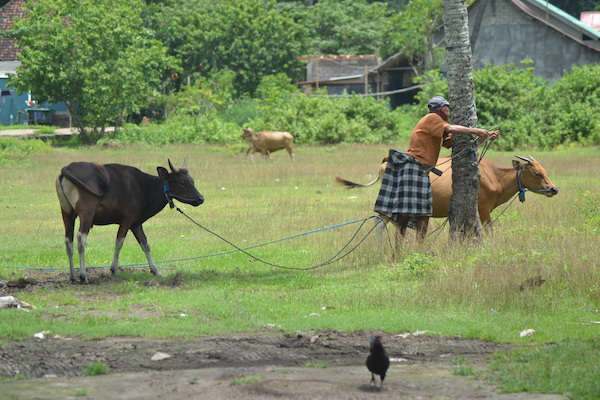
That’s why the task of building industrial tough beef cattle farms in the country has never been easy. There were so many opportunities in the past to build a ranch that were just missed. Various projects of foreign debt are inconclusive to date. However, a very large population and an increasing awareness of nutrition and income levels, lead some people to believe that our country is a market potential for the beef cattle industry.

